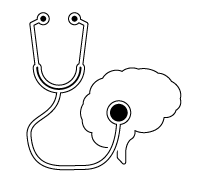What are the Workplace Benefits?
Happiness can benefit work and workplace in more ways than we think.
Mental benefits include an increase in motivation and an improved ability to integrate information.
Social benefits include better relationships and more cooperation.
Key discoveries include:
- Happiness can increase curiosity, creativity and motivation.
- When we’re happy we are more likely to be cooperative and collaborative during negotiations.
- Positive emotions make us more productive.
- When happier at work we’re more likely to be rated highly for financial performance and generally by our leaders.
- Workers who experience high wellbeing are 81% less likely to seek out a new employer in the next year.
- Employees with the highest wellbeing levels miss 41% less work due to poor health and are 65% less likely to be involved in a workplace accident.
- Well-being can actually be a more important contributor to on-the-job productivity than an employee's chronic disease status such as diabetes.
- Leaders who are actively seen to exhibit wellbeing behaviors are more likely to have team members with high wellbeing levels.
- Wellbeing increases our clarity about roles and responsibilities and how to accomplish tasks ahead of deadlines.
- Better wellbeing reduces employee turnover, sick days and absenteeism.
- Happiness at a point in time in our working life is associated with higher income later in our life
- Greater life satisfaction amongst employees is associated with better revenue, sales, and profits.

MAP has a scientifically validated understanding of how the benefits of workplace wellbeing are more likely with high levels of personal wellbeing.
This workplace-personal life connection happens because your personal life and your life at work interact and influence each other in a two-way flow.



